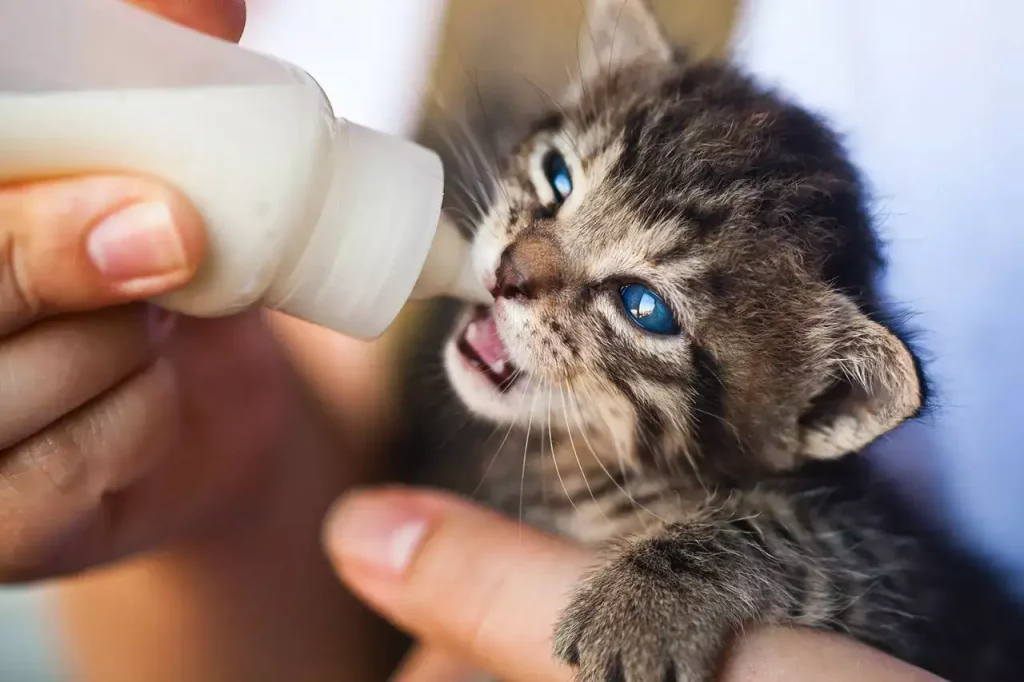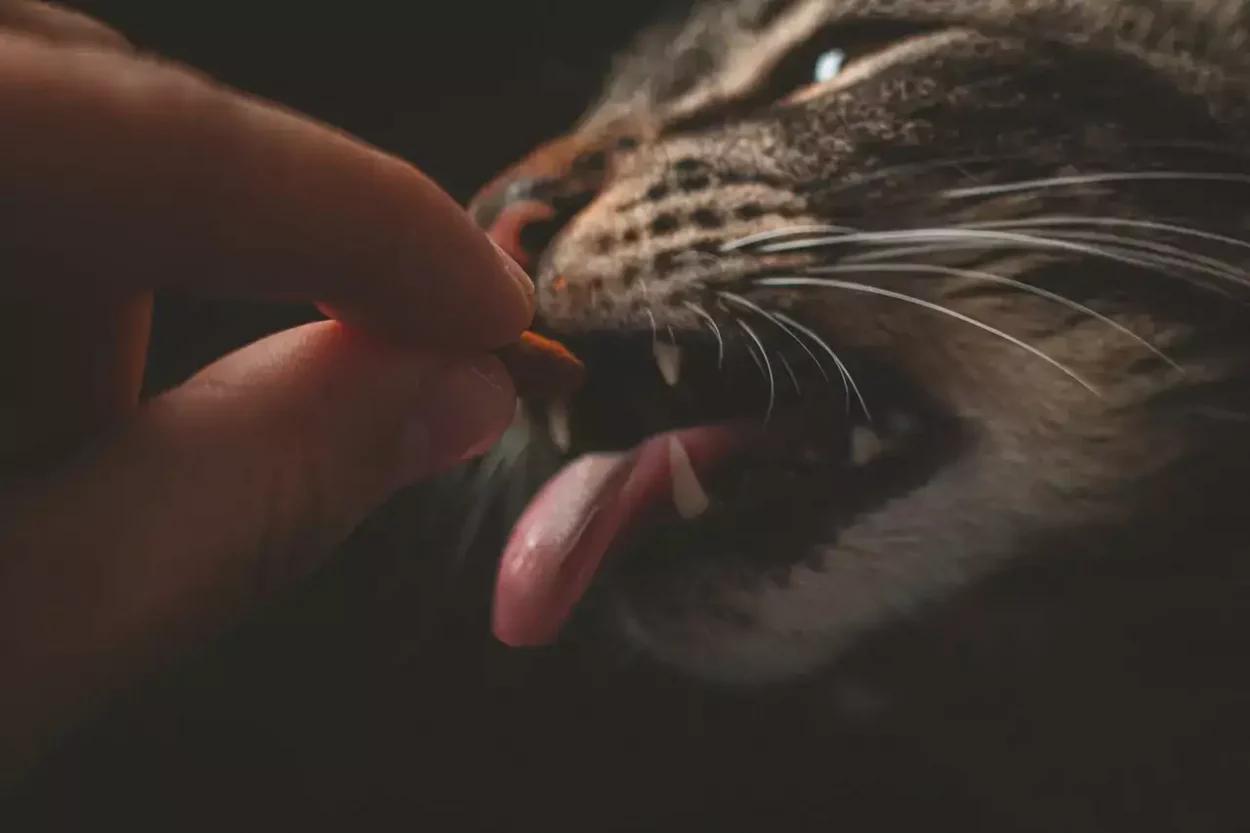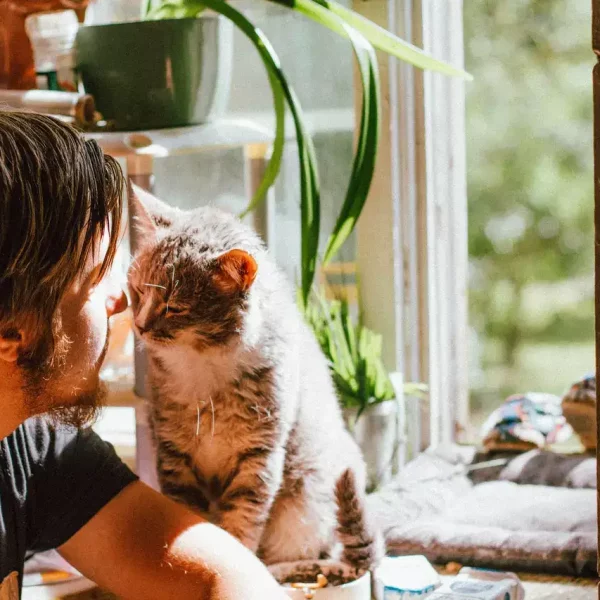The content of this blog post is based on my personal opinion as a cat owner and should not be construed as professional veterinarian advice. It’s my own thoughts, plus the results of online research I’ve done – you should do the same about feeding cats once a day, and whether it’s considered cruel.
The bottom line is, I do believe that it could be considered cruel to feed a cat once a day, and here’s why.
Why it could be cruel to feed a cat once a day
Is it cruel to feed a cat once a day? While it may not be seen as cruelty, once a day meal schedules for cats aren’t very beneficial, except in extreme circumstances. The consequences could impact a cat’s health and even personality.
To keep giving your cat the best life and ensure a positive experience as a pet owner, use the insight below. Understanding your cat’s needs will help you plan your weekly schedule with her more effectively – regular feeding schedules are one of cat’s basic needs.
Why is a proper feeding schedule so important?
Some people compare cats to wild animals like wolves and believe that similar to these creatures, they’ll want one meal a day. However, cats’ digestive systems are actually more similar to ours, so your cat’s stomach will be empty again six to eight hours after a meal. So, feeding them only once a day leaves them pining for more for most of the day.
How do feeding times affect behavior?
A cat may get used to eating only once a day and one may not deem it as cruelty to maintain this schedule. However, an empty stomach has far reaching negative effects. For example, your cat may become anxious when it feels hungry and has no power over when the next meal is coming.
With anxiety and irritability comes the possibility of your cat turning aggressive and showing other behavioral problems. It may chew objects in the house or allergic reactions could become worse because of stress.
This necessitates a more regular eating program.
Handy Hint: People also ask whether you should walk your cat before or after a meal. Here’s all you need to know.
How many times a day should your cat eat?
For most cats, two meals a day will suffice. You can also plan based on the advice for the following categories.
Feeding for adult cats
Most experts advise that cats get at least two meals a day. For smaller breeds you can consider three meals a day. Bigger cats obviously need more food, but smaller cats are usually more active so they will burn off energy much faster and feel the hunger pangs earlier. They may need a food portion halfway through the day to stay alert and happy throughout.
Feeding Kittens
Your cat’s growth and health during kitten years will determine its general health throughout his or her life. For example, you need to ensure optimal growth and bone strength by ensuring proper nutrition.

To manage this, many kittens require:
- Multiple meals a day, as much as four while they’re very young
- Scale it down to three times when they’re four months old
- Switch to two meals for a six-month-old
When to feed a sick cat
There are certain situations that may require you to cut back your cat’s food intake. When your cat has been sick or vomited recently, it’s often best to wait about 12 hours before the next meal. This gives the digestive system time to recover and deal with possible inflammation – there are also feeding considerations if serious conditions like Parvo strike.
Remember to check that it stays hydrated and start off with a small meal rather than its usual full portion.
How much should you feed your cat?
Almost any pack of cat food you buy will have a feeding table printed on the packaging. This will give you different amounts, based on facts like:
- What is the weight of the cat?
- Do you want your cat to lose or pick up weight?
- How old is the cat?
Find the daily amount and divide the weight between the number of meals you plan to give to your cat from now on. You can adjust the amount slightly based on your cat’s activity level. If your cat is extremely active and starts losing weight, increase portions. Check with your vet if you’re unsure about this though.
Brands may have different tables for their different food products, so always check the table when you buy a new type of food.
3 Different approaches to feeding
The challenge with feeding times and frequency is to find an arrangement that works for you and your cat. Consider these options to help you decide on a way forward.
Your cat is in control
The popular terms here are ‘graze’ or ‘free feeding’. With this feeding method you leave food out all day so your cat can eat when it wants to. This is only advisable for very active cats or nursing females. Others may quickly become overweight.
You run the risk of the food becoming contaminated or attracting insects, so rather use dry food with this option.
You control portions
Using the food tables mentioned above, or by consulting your vet, determine the ideal amount of food your cat needs during each meal. Only place the allocated amount of food in its bowl during each mealtime. It’s up to the cat when he or she eats the food throughout the day. Since you only provide a certain amount, there’s no chance of overfeeding.
The clock is in control
You may not want to leave out a food portion all day, either because you don’t want to attract bugs or if you have multiple cats you’re scared they’ll eat each other’s food when you leave. In these cases, only leave the food in their bowls for +/- 30 minutes. Pick it up afterwards, whether they’ve eaten or not. They’ll quickly learn that they need to eat in the allocated time period if they don’t want to go hungry for part of the day.
Thoughts on feeding cats table scraps
Some cat owners may consider table scraps as an additional meal of the day, but you must plan this very carefully if you do.
Firstly, remember that cat food brands put everything into their products that you cat needs. Exchanging a food portion for a table scraps portion could then limit the amount of nutrients your cat gets.
Also, table scraps aren’t always beneficial for cats:
- Raw meat may contain bacteria
- Fatty snacks will lead to weight gain
- While some vegetables will provide nutrition, it also contains lots of fiber which your cat’s digestive system can’t always break down properly
- Pieces of bone in leftover food can become obstructions in the gut
For these reasons, keep table scraps at 10% or less of your cat’s overall diet.
Are you struggling to find a schedule that works for both of you?
Even the most caring pet owners may consider a once a day feeding schedule purely because of time constraints. If you have a busy schedule, leave your home early and return late, you may only have time to feed your cat late at night. Luckily, automated feeders can help solve this problem.
Another common situation is finding feeding arrangements that promote general health. If your cat is already overweight you may think drastically cutting down on its food intake is the solution, almost like putting him or her on a diet. Unfortunately, this isn’t ideal.
Your cat needs a specific amount of food to flourish and as stated its digestive system needs multiple feeds a day. You can’t explain to a cat about ‘diets’ so it may simply get irritable and aggressive at the lack of food. Rather feed smaller meals multiple times a day and make sure you use a cat food type designed for weight loss. For example, it may contain less calories than some others. With technology and the many food options out there these days, there’s a solution that can work for both of you.
Conclusion
Of course, you want to do the best for your feline companion. And you only have to look at their excited faces at mealtimes to know food is one thing that’s important to them.
However, along with the food you also have to make mealtimes work to the benefit of your personal schedule and what’s best for your cat’s digestive system. What meal schedule will work? What is safe? Is it cruel to feed a cat once a day?
I think it is based on my research and experience.



Leave a Comment